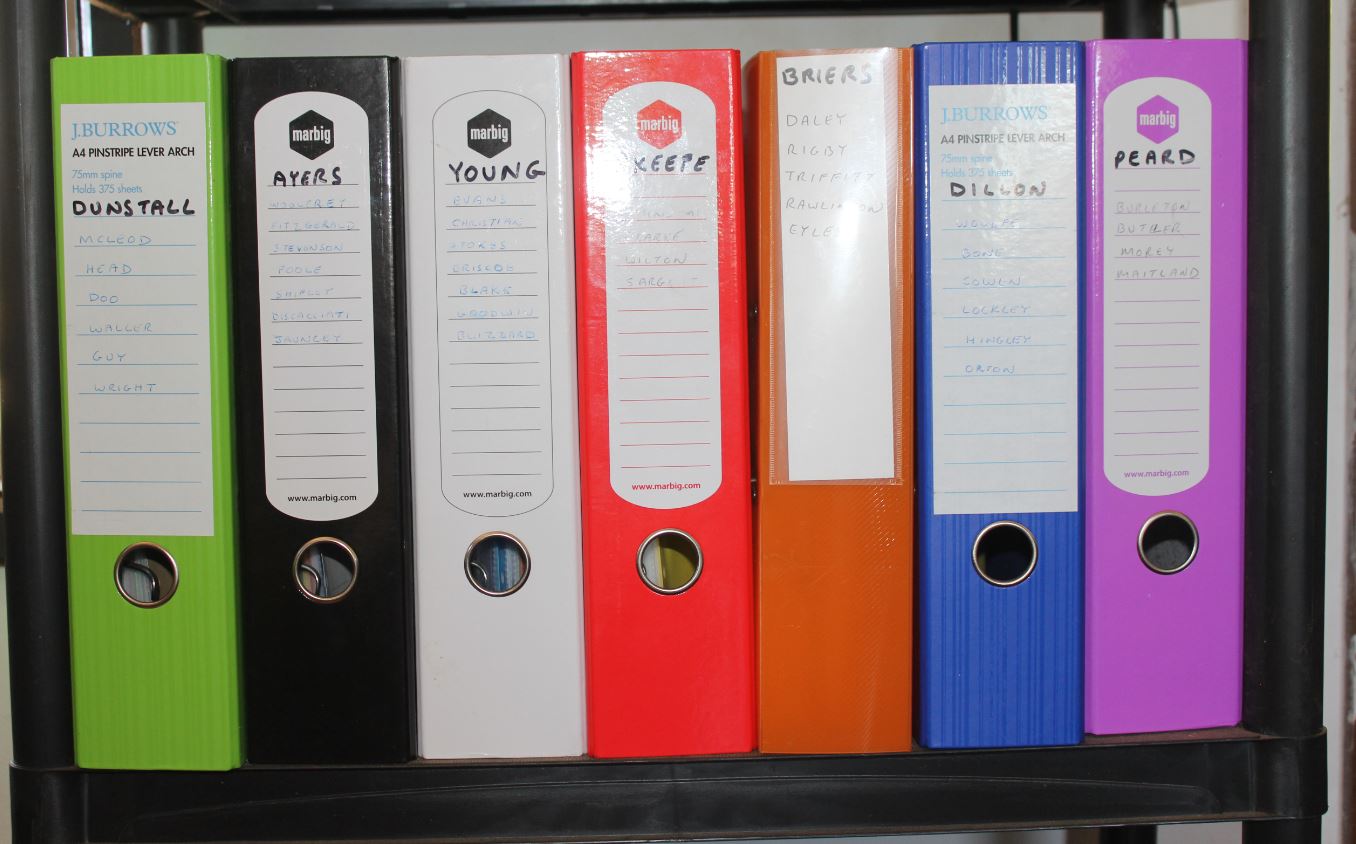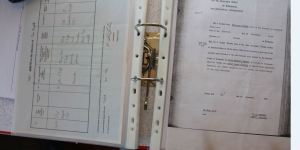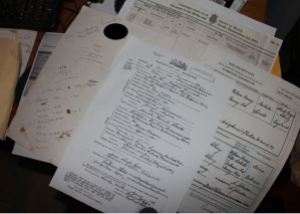Surely, the holidays are for digging out stacks of paper and filing them in their correct folders.
When I started family history research I had a notebook, an exercise book, a stack of paper group sheets and a whole lot of envelope-backs. It wasn’t supposed to work that way, it just happened. I collected reams of information that all went loose into a carton. One day, I stopped collecting data and sat down to see what I had. If my memory wasn’t so good I’d have given it up then. I knew I needed a better system.
Next, I kept my family history records in A4 clear leaf display books, the ones which had about twenty pages and the option to add more. I also began using a computer-based family tree. It worked for a few years. As I discovered new family lines I bought a new display book. By the middle of last year my fifty or so display books were falling apart and I realised a new solution was required.
I have now turned to 75mm ring binders, colour coded for each family group. I have eight ring binders – my husband’s four grandparent families and my own four grandparent families. So far, this system is working well. Admittedly a few of those folders are already full.
Migrating the family history papers from the old filing system to the new was one of my objectives for 2014. I made a good beginning. I chose the colours, purchased the binders, wore the printer out by printing group sheets for every direct-line family, then group sheets for the siblings of every ancestor. I put in the copies of birth, marriage and death certificates. So far so good.
Then came the stacks of miscellaneous records. Local gazettes listing their address and whether they owned their property or rented, transcriptions I had made of family bibles, cemetery lists … all those records which hold a dozen pieces of information on one page.
The pace has slowed. Every page has details about the family which I had forgotten, or which meant nothing without information I have learned more recently. I am discovering whole new chapters of an ancestor’s life, new children, occupations and troubles by going over my oldest notes. These papers are getting sorted at a rate of about two pages a week.
This is why I view my stacks of paper records as a black hole. They are denser than seems possible and they eat time. Every single page that I read seems to result in days on my computer and about five years in an ancestor’s life.
This being one of my objectives for 2014, I had another go today at filing those papers. Two pages, I’ve put away. The first was a history of Lachlan Village in Tasmania without many names. Easy. Then came the scribbled marriage date of Hannah Thompson to John Clarke, brother to Rebecca Clarke who is my husband’s great great grandmother. Now that I see it, I remember visiting my husband’s great aunt who was aged 86 in 1990. I’d completely forgotten that visit.
Looking at it today, I noticed that the surname of his bride was the same as his stepmother. After some digging, I now know that the two families travelled together across the world and were more closely connected than we knew.
Having at last placed that piece of paper in its folder, I looked at the next one. It gives the military record of a brother of our Peard ancestor from Ireland, showing a line which seems to have emigrated to the United States. This name, I’m pretty sure, appears in the family trees of some of my DNA matches from the United States.
Now I’ll have to investigate those trees to see if I have found our common ancestor. This may take a couple of days.
I don’t think I’ll have these papers sorted by the new year. But one day – surely one day – it will be complete!



My belief is once you start it never ends.Ha! Ha! ♥